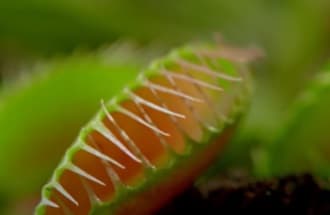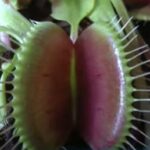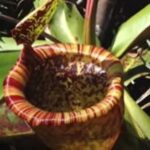As an Amazon Associate, this site earns commissions from qualifying purchases. For more details, click here.
The allure of carnivorous plants, with their intriguing adaptations and captivating beauty, often prompts enthusiasts to explore the possibility of growing different species together. Among the most popular choices are Venus flytraps and pitcher plants, each boasting unique mechanisms to capture and digest prey.
Key Takeaways:
- Venus flytraps and pitcher plants can be grown together with proper care and attention to their shared environmental needs.
- Both plants thrive in bright, indirect sunlight, moist acidic soil, and high humidity levels.
- Cultivating these carnivorous companions offers natural pest control, educational opportunities, and aesthetic appeal in home and garden settings.
Before embarking on the journey of growing Venus flytraps and pitcher plants together, it’s crucial to gain insight into their natural habitats, evolutionary adaptations, and distinct characteristics.
Venus Flytrap (Dionaea muscipula)
Endemic to the wetlands of the Carolinas in the southeastern United States, Venus flytraps are renowned for their intricate trap mechanism.
The trap leaves of Venus flytraps feature sensitive trigger hairs that, when stimulated by an insect, prompt the rapid closure of the leaf, ensnaring the prey for digestion.
These carnivorous plants derive essential nutrients, such as nitrogen and phosphorus, from the digestion of insects, supplementing the nutrient-poor soil in their native habitats.

Pitcher Plant (Nepenthes spp.)
Pitcher plants are a diverse group of carnivorous plants found in tropical and subtropical regions worldwide, including Asia, Australia, and the Americas.
Characterized by modified leaves that form pitcher-shaped traps filled with digestive fluids, pitcher plants attract, capture, and digest a wide range of prey, including insects, spiders, and even small vertebrates.
The unique pitcher-shaped traps of these plants serve as both passive pitfalls and active hunting mechanisms, luring unsuspecting prey with enticing nectar and slippery surfaces.
Compatibility of Venus Flytraps and Pitcher Plants
While Venus flytraps and pitcher plants originate from different geographical regions, they share several commonalities in terms of environmental preferences and care requirements. Understanding their compatibility is essential for creating a thriving growing environment for both species:
Light Requirements
Both Venus flytraps and pitcher plants thrive in bright, indirect sunlight. Positioning them in a location with ample natural light, such as a south-facing window or a well-lit outdoor area, ensures optimal growth and development.
However, it’s crucial to avoid exposing these plants to direct sunlight, especially during the hottest part of the day, as this can lead to leaf burn and heat stress.
Soil Composition
Provide a well-draining, acidic growing medium for Venus flytraps and pitcher plants to mimic their native habitats. A combination of sphagnum moss, perlite, and horticultural-grade sand creates an ideal substrate for carnivorous plants, promoting healthy root growth and preventing waterlogged conditions.
Avoid using standard potting soil or fertilizer-containing mixes, as they can be detrimental to carnivorous plants, causing root rot and nutrient imbalances.
Watering and Humidity
Maintain consistently moist soil for both Venus flytraps and pitcher plants, as they are adapted to thrive in humid environments.
Water these plants with distilled water, rainwater, or purified water to prevent mineral buildup and maintain proper soil pH levels. Tap water, which may contain high levels of dissolved minerals and chemicals, can be harmful to carnivorous plants over time.
In addition to regular watering, consider increasing humidity levels around the plants by misting the foliage or placing them on a humidity tray filled with water and pebbles. This helps prevent dehydration and ensures optimal growth and vitality.
Temperature Tolerance
Venus flytraps are cold-hardy plants capable of withstanding winter temperatures as low as 20°F (-6°C) with proper protection. In contrast, many pitcher plant species are native to tropical and subtropical regions and thrive in consistently warm temperatures.
When growing Venus flytraps and pitcher plants together, it’s essential to maintain suitable temperature conditions that accommodate the needs of both species. Most carnivorous plants prefer temperatures ranging from 65°F to 85°F (18°C to 29°C) during the growing season, with slight variations depending on the species and geographical origin.
Benefits of Growing Venus Flytraps and Pitcher Plants Together
Combining Venus flytraps and pitcher plants in a shared growing environment offers numerous benefits, ranging from natural pest control to educational opportunities and aesthetic appeal:
Natural Pest Control
Venus flytraps and pitcher plants serve as effective biological control agents, attracting and trapping a variety of insects, including flies, mosquitoes, ants, and other pests.
By incorporating these carnivorous plants into your home or garden, you can help manage insect populations without resorting to chemical pesticides, promoting a healthier and more balanced ecosystem.
Educational Opportunities
Cultivating Venus flytraps and pitcher plants together provides an excellent educational experience for individuals of all ages, offering insights into the fascinating world of carnivorous plants and their unique adaptations.
Observing the feeding behaviors of Venus flytraps and pitcher plants can spark curiosity and foster a deeper appreciation for the complexities of nature, encouraging hands-on learning and exploration.
Aesthetic Appeal
Venus flytraps and pitcher plants exhibit striking foliage and intriguing growth habits, making them attractive additions to indoor gardens, terrariums, botanical collections, and outdoor landscapes.
The diverse shapes, colors, and sizes of Venus flytraps and pitcher plants create visually captivating displays that serve as focal points of interest, sparking conversations and admiration among observers.
Common Problems When Growing Venus Flytraps and Pitcher Plants
When cultivating Venus flytraps and pitcher plants together, it’s important to be aware of several common problems that may arise. While these carnivorous companions can coexist harmoniously with proper care, addressing potential issues promptly is key to ensuring their health and vitality. Let’s explore these common problems in more detail:
Overwatering:
Both Venus flytraps and pitcher plants require moist soil to thrive, but overwatering can spell trouble. Waterlogged soil can suffocate roots, leading to root rot and other fungal diseases that compromise plant health.
To prevent overwatering, use pots with adequate drainage holes and allow the soil to dry out partially between waterings. Monitor soil moisture levels regularly to avoid excess water accumulation.
Inadequate Light
Insufficient light can weaken Venus flytraps and pitcher plants, hindering their growth and reducing their trapping efficiency. These plants thrive in bright, indirect sunlight, but they may struggle if placed in dimly lit locations. Provide ample natural light or supplement with grow lights to ensure optimal photosynthesis and trap function.
Incorrect Soil Composition
The soil composition plays a crucial role in the health and growth of Venus flytraps and pitcher plants. Standard potting soil is unsuitable for carnivorous plants, as it lacks the acidic and well-draining qualities they require.
Use a specialized mix of sphagnum moss, perlite, and horticultural sand to create a suitable growing medium that promotes healthy root development and prevents waterlogging.
Pest Infestations
Aphids, spider mites, and other pests can wreak havoc on Venus flytraps and pitcher plants, damaging their foliage and trap mechanisms.
Regularly inspect plants for signs of pest infestation, such as discolored or distorted leaves, and take appropriate measures to control pests.
Organic solutions like insecticidal soap or horticultural oil can effectively manage pest populations without harming the plants or their natural predators.
Temperature Extremes
Venus flytraps are cold-hardy plants, capable of withstanding winter temperatures as low as 20°F (-6°C) with proper protection. However, many pitcher plant species prefer warmer temperatures and may suffer in extreme cold or heat. Maintain suitable temperature conditions year-round, avoiding exposure to frost or scorching sun that can stress or damage the plants.
Fertilizer Contamination
Carnivorous plants obtain nutrients primarily from captured insects rather than the soil. Exposure to fertilizers or nutrient-rich water can disrupt their natural feeding mechanisms and lead to nutrient imbalances or toxicity. Avoid fertilizing Venus flytraps and pitcher plants altogether to prevent potential harm and maintain their carnivorous habits.
Competition for Space
When grown together, Venus flytraps and pitcher plants may compete for space and resources, especially in confined growing environments. Provide adequate spacing between plants to prevent overcrowding and ensure each plant receives sufficient light, air circulation, and access to prey. Regularly prune or divide plants as needed to manage their growth and maintain a balanced ecosystem within the growing space.
By proactively addressing these common problems and providing proper care, you can cultivate Venus flytraps and pitcher plants together successfully, creating a captivating and thriving display of carnivorous companions in your home or garden.
Conclusion
In conclusion, cultivating Venus flytraps and pitcher plants together offers a unique opportunity to explore the fascinating world of carnivorous plants while enjoying the numerous benefits they provide. Whether you’re a novice gardener or a seasoned plant enthusiast, the journey of growing Venus flytraps and pitcher plants together is sure to inspire wonder, curiosity, and appreciation for the wonders of nature.

My fascination with carnivorous plants began many, many years ago with Venus Fly Traps. Now I am more than happy to impart what I know with other enthusiasts and those who are curious about meat eating plants.


